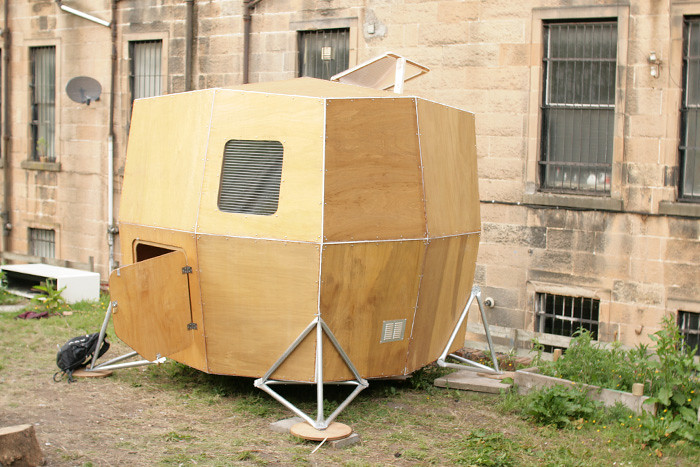At Green Thing we always say that being green doesn’t mean you have to live in a hole with very little provisions to reduce your impact on the earth. While this would make a difference (50 percent of carbon emissions come from the construction and operation of our built environment) it’s all about small, but meaningful changes and everyone doing their bit. But, if you are the type that wants to try out living with minimal space and impact — and even if you aren’t — here are four examples of alternative DIY (do-it-yourself) dwelling arrangements.
1. The Hobbit House: This structure lives in Wales and has been constructed from all sorts of unwanted materials. Simon Saville, one half of the team behind this house explains “Anything you could possibly want is in a rubbish pile somewhere (windows, burner, plumbing, wiring…).” Very true, Simon. Good point.

2. Decorated Sheds: These structures have been marketed as backyard offices, yoga studios, sun rooms and more. The shed can be made completely off the grid and with zero emissions, and you can customize the materials you’d like used in the build, such as cork flooring.

3. A microhouse: This structure is particularly interesting, as it’s mobile. Built from plywood and stainless steel piping, designer Alex Farmer took guidance from Ken Issac’s original 8-foot Microhouse concept from the 1960s. Alex’s blog shares more information about this tiny, minimalist dwelling.

4. This shed in the woods: For under $10,000 (yes, this may seem steep but people can include/exclude features as they see fit) this shed is customized with off-the grid technology, such as solar chargers and a portable toilet and it can be built within a few weeks. Just a perfect amount of space.


Katherine Hui is currently the Social site editor at Green Thing, a web-based public service in London that inspires people to lead greener lives through creative content.
Before this, she worked as the Development Manager at Social Innovation Camp, an organization that encourages people to use web and mobile-based technology to mobilise social change. She oversaw 300 ideas submission and helped build 20 prototypes – five of which have gone on to get further funding or investment.
Katherine’s came over to the UK form Canada in 2007 for an MSc program at the London School of Economics. Before arriving in London, she managed a small environmental start-up in Vancouver called the Canadian Climate Change Alliance.
Katherine is football mad. She is a loyal supporter of Arsenal FC, plays for Islington Borough Ladies FC and coaches for Gunners in Islington in her spare time. Her second favourite hobby is kite surfing and she can sometimes be found chasing the wind.








